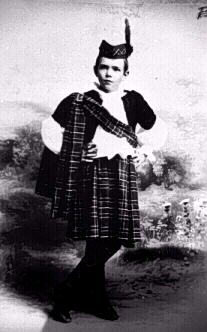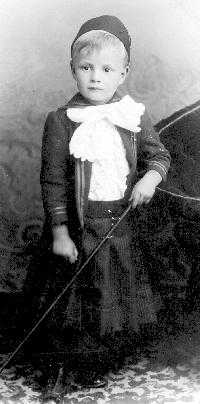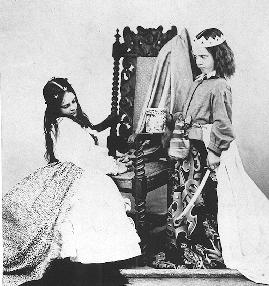
Figure 1.--While for the most part it was younger boys who wore dresses, some quite old boys were outfitted in fancy Scottish outfits, in this case a Fauntleroy jacket and Scotish kilt skirt.


Figure 1.--While for the most part it was younger boys who wore dresses, some quite old boys were outfitted in fancy Scottish outfits, in this case a Fauntleroy jacket and Scotish kilt skirt. |
Many dresses worn by boys in the latter 19th century were rather plain. There were, however, many fancy styles for boys. Some were well known styles such as sailor or Fauntleroy suits. There were, however, many others such as fanciful Scottish kilt styles, much fancier than the plainer kilt suits worn by boys. Another popular style was the Zouave dresses, based on the French-style uniforms worn by some Civil War units.
Sailor dresses, dresses with middy blouses were some of the most popular with boys. They were available in many different styles. Some of the styles were quite plain, others included ruffles or even lace on the sailor collar.
Boys in the late 19th century were commonly dressed in kilt suits. Many of these suits were quite plain and not of tartan material--kilts in name only. There were, however, also fancy kilts or dresses available in tartan material. They outfits were often worn with other Scottish items, Glengary and Balmoral caps, jabots, ' sashes, and sporans. Sometimes these outfits mixed various styles. Some outfits, for example, incorporated velvet Fauntleroy jackets and lace collared blouses with Scottish kilt skirts. Much older boys were outfitted in dresses with these Scottish motifs than with other dress styles worn by boys.

Figure 2.--Dresses based on the French-inspired uniforms of Civil War units were popular in the late 19th century, especially in the years after the Civil War. |
After 1885, Fauntleroy velvet suits were some of the most popular outfits for boys. They were available in many styles. Some mothers selected Fautleroy outfits for their boys, but were not yet ready for him to wear knee pants. Thus many styles of Fauntleroy dresses were available to the discering mother. This style is discussed in detail on separate pages.
The far-flung fame of the French Zouaves achieved great popularity among Civil War volunteers, especially in the north. The exotic uniforms of these soldiers was promoted in drill competions througout the north in the months leading up to the War. The valorous record of Zouave units during the War led to dresses for boys being made in this style. The dress outfits only copied the jackets as Zouaves wore baggy pantaloons and not dresses. Some Zouacve dress outfits for boys included the characteristic cap. Other items were addes, however, that were not worn by the Zouaves, like a lace collar or large floppy bow.

Figure 3.--Two English children play acting. Such theatricals were popular household amusements in the days before television. Notice the long hair worn by the boy. |
All children love to play act. Boys in the 19th and early 20th centuries were no exception. Children were often photographed in fancy dress for amateur theatrics at home. The participants were in some occasions boys who still had long hair or still were atired in dresses. Such imaginative household diversions have
since the advent of modern media, especially television, basically disappeared. With so
much programing now available, children are more likely than in the past to be passive
listeners than imaginative participants.
Navigate the Boys' Historical Clothing Web Site:
[Introduction]
[Activities]
[Biographies]
[Chronology]
[Clothing styles]
[Countries]
[Bibliographies]
[Contributions]
[FAQs]
[Glossary]
[Satellite sites]
[Tools]
[Boys' Clothing Home]